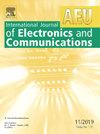Harvesting random telegraph noise for true random number generation
IF 3
3区 计算机科学
Q2 ENGINEERING, ELECTRICAL & ELECTRONIC
Aeu-International Journal of Electronics and Communications
Pub Date : 2025-04-17
DOI:10.1016/j.aeue.2025.155801
引用次数: 0
Abstract
At first glance, Random Telegraph Noise (RTN) in deeply scaled CMOS transistors may seem like a reliability nuisance. Yet, behind the discrete trapping-and-detrapping events lurks a potent source of hardware entropy. In this paper, we harness RTN to build a dual-purpose security module that serves as both a Physical Unclonable Function (PUF) and a True Random Number Generator (TRNG). By measuring the so-called Maximum Current Fluctuation (MCF) at carefully chosen observation windows, our design switches effortlessly between the stable outputs needed for a PUF and the maximally unpredictable bitstreams demanded by a TRNG. Although single-defect RTN has long been deemed ideal for randomness, we show that multi-defect RTN scenarios, much more prevalent in real-world manufacturing, can also yield high-quality random bits, especially when aided by lightweight post-processing. Simple statistical metrics guide the initial tuning, after which the final bitstreams pass the NIST SP 800-22 test suite to validate the statistical soundness of our proposal. In doing so, we address key challenges that arise when designing an RTN-based TRNG and compare our results against state-of-the-art solutions, highlighting advantages in circuit simplicity, bit-rate scalability, and dual-use capability.
利用随机电报噪声生成真正的随机数
乍一看,深度缩放CMOS晶体管中的随机电报噪声(RTN)似乎是一个可靠性问题。然而,在离散的捕获和脱除事件背后隐藏着一个强大的硬件熵源。在本文中,我们利用RTN构建了一个双重用途的安全模块,该模块既可以作为物理不可克隆函数(PUF),也可以作为真随机数生成器(TRNG)。通过在精心选择的观察窗口测量所谓的最大电流波动(MCF),我们的设计可以毫不费力地在PUF所需的稳定输出和TRNG所需的最大不可预测的比特流之间切换。虽然单缺陷RTN一直被认为是理想的随机性,但我们表明,多缺陷RTN场景,在现实世界的制造中更为普遍,也可以产生高质量的随机比特,特别是在轻量级后处理的帮助下。简单的统计指标指导初始调优,之后,最终的比特流通过NIST SP 800-22测试套件来验证我们建议的统计合理性。在此过程中,我们解决了在设计基于rtn的TRNG时出现的关键挑战,并将我们的结果与最先进的解决方案进行了比较,突出了电路简单性,比特率可扩展性和两用能力方面的优势。
本文章由计算机程序翻译,如有差异,请以英文原文为准。
求助全文
约1分钟内获得全文
求助全文
来源期刊
CiteScore
6.90
自引率
18.80%
发文量
292
审稿时长
4.9 months
期刊介绍:
AEÜ is an international scientific journal which publishes both original works and invited tutorials. The journal''s scope covers all aspects of theory and design of circuits, systems and devices for electronics, signal processing, and communication, including:
signal and system theory, digital signal processing
network theory and circuit design
information theory, communication theory and techniques, modulation, source and channel coding
switching theory and techniques, communication protocols
optical communications
microwave theory and techniques, radar, sonar
antennas, wave propagation
AEÜ publishes full papers and letters with very short turn around time but a high standard review process. Review cycles are typically finished within twelve weeks by application of modern electronic communication facilities.

 求助内容:
求助内容: 应助结果提醒方式:
应助结果提醒方式:


